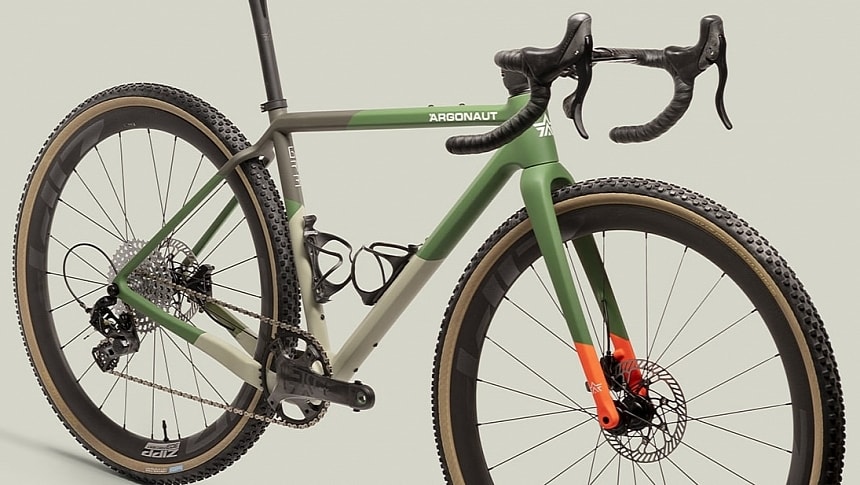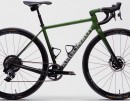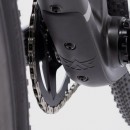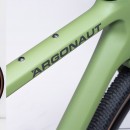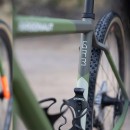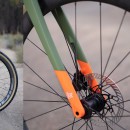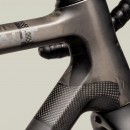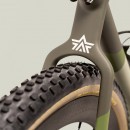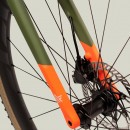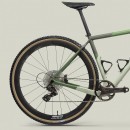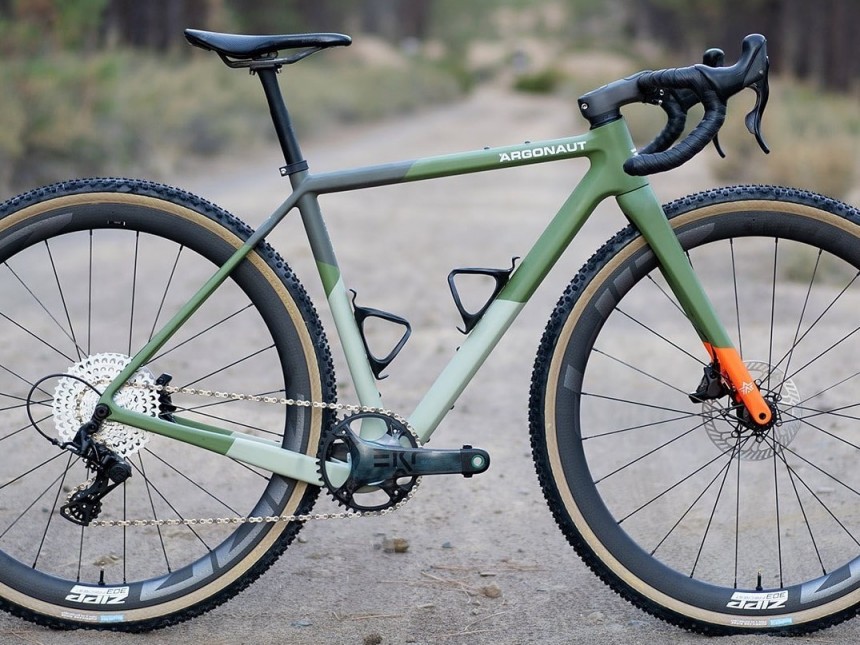For the past few years, there's been a growing trend in cycling: gravel biking. Well, this time around, America's own Argonaut is here to show us what they've been doing since 2007. Get ready to meet the GR3.
Let's face it; countless bicycles out there just look so much alike. Heck, for some, you won't even feel a difference the moment you hop on one. Well, not the GR3; this carbon fiber monster has been redesigned and optimized from tip to hardtail for nothing more than good old gravel riding, a game in which Argonaut has been showing immense promise ever since they hit the streets.
So, what makes the GR3 so dang special? Well, if you're into this growing pastime and industry, take a nice long look at the images in the gallery and compare what you see to all the other gravel two-wheelers you may have witnessed over the course of your life. Clearly, there are some major differences, and they all start with nothing more than the sort of geometry that Argonaut feels is best for this sport.
What this manufacturer aimed for with the GR3 is somewhat of a holy grail for gravel bikes: they wanted a beast that can handle good old tarmac and smooth gravel but also the rougher stuff, like getting together with the gang and bombing some downhill singletracks through the woods, airtime included! No joke; some of the ride footage spotted on the manufacturer's website even shows these babies catching mad air. While that's not typically something such bikes are known to be built for, the GR3 can do it.
How are these abilities achieved? Well, aside from the geometry, which I'll point out later, it's all down to the carbon fiber layup that Argonauts employs. Clearly, the manufacturer doesn't mention what goes where and how, but what they can do is give future owners a ride that's been tailored from production to delivery. And yes, this sort of process does cost a butt-load of cash, but we'll get to that, too.
Overall, each GR3 is designed to accommodate up to 50c tires, giving riders the ability to tackle all those terrains I mentioned earlier, but it's the fork and seat stay that I need to shed some light upon. At the front, Argonaut equips the GR3 with nothing more than a proprietary fork built precisely for this frameset. Best of all, this two-wheeler's head tube angle is set at an ultra-slack 68.5 degrees, giving it those downhill capabilities and the ability to climb like a spider.
Yet, at the rear, we notice a feature that's often seen on the quickest of road bikes: direct your attention to the seat stay. Here, Argonaut begins the seat stay and wheel arch much further back, also known as a wishbone seat stay, and with it, the rear is sure to offer some of the best vibration-dampening abilities around. You don't need to be an engineer to understand how hits taken up by the rear wheel are affected by such a feature. Did I mention that this is paired with a 415 mm chain stay? Anyone order a carbon fiber bull on wheels?
As I explored the GR3, I noticed something in one of the images where the BB (Bottom Bracket) is seen. Not only does the BB sit 75 mm lower than the axles, but if you notice how it's positioned within the frame itself, you'll see that it sits rather high in comparison to the lowest part of that section. As a result, this thing has got to be one stable sucker - Argonaut prides itself on this notion - and personally, I'd love to whip one around some trail or park.
The downside to testing or owning a GR3 is the fact that the least expensive build available on Argonaut's website comes in with a starting price of no less than $14,369 (€13,300 at current exchange rates). So yes, if you do go for a test ride, you'd better come back with that thing unscratched and unscathed, or you're going home with a secondhand bike at full price and an SRAM Force drivetrain and braking setup.
Sure, it's one hell of a price tag, but we do need to consider that this puppy is on a completely different level in comparison to other gravel bicycles out there. Oh, and let's not forget the fact that nearly everything on this two-wheeler is handcrafted out of carbon fiber.
On the other hand, if you're a die-hard cyclist, and money's no object to you, go all the way and grab an SRAM Red setup ($15,500), throw on a pair of Princeton Grit 4540 rims ($3,400), and your total for the day is $18,900 (€17,500). That's right, some cars actually cost less, but you can't go flying through the local woods with your buddies on that now, can you?
Find one, ride one, and let yourself fall in love all over again.
So, what makes the GR3 so dang special? Well, if you're into this growing pastime and industry, take a nice long look at the images in the gallery and compare what you see to all the other gravel two-wheelers you may have witnessed over the course of your life. Clearly, there are some major differences, and they all start with nothing more than the sort of geometry that Argonaut feels is best for this sport.
What this manufacturer aimed for with the GR3 is somewhat of a holy grail for gravel bikes: they wanted a beast that can handle good old tarmac and smooth gravel but also the rougher stuff, like getting together with the gang and bombing some downhill singletracks through the woods, airtime included! No joke; some of the ride footage spotted on the manufacturer's website even shows these babies catching mad air. While that's not typically something such bikes are known to be built for, the GR3 can do it.
Overall, each GR3 is designed to accommodate up to 50c tires, giving riders the ability to tackle all those terrains I mentioned earlier, but it's the fork and seat stay that I need to shed some light upon. At the front, Argonaut equips the GR3 with nothing more than a proprietary fork built precisely for this frameset. Best of all, this two-wheeler's head tube angle is set at an ultra-slack 68.5 degrees, giving it those downhill capabilities and the ability to climb like a spider.
Yet, at the rear, we notice a feature that's often seen on the quickest of road bikes: direct your attention to the seat stay. Here, Argonaut begins the seat stay and wheel arch much further back, also known as a wishbone seat stay, and with it, the rear is sure to offer some of the best vibration-dampening abilities around. You don't need to be an engineer to understand how hits taken up by the rear wheel are affected by such a feature. Did I mention that this is paired with a 415 mm chain stay? Anyone order a carbon fiber bull on wheels?
The downside to testing or owning a GR3 is the fact that the least expensive build available on Argonaut's website comes in with a starting price of no less than $14,369 (€13,300 at current exchange rates). So yes, if you do go for a test ride, you'd better come back with that thing unscratched and unscathed, or you're going home with a secondhand bike at full price and an SRAM Force drivetrain and braking setup.
Sure, it's one hell of a price tag, but we do need to consider that this puppy is on a completely different level in comparison to other gravel bicycles out there. Oh, and let's not forget the fact that nearly everything on this two-wheeler is handcrafted out of carbon fiber.
On the other hand, if you're a die-hard cyclist, and money's no object to you, go all the way and grab an SRAM Red setup ($15,500), throw on a pair of Princeton Grit 4540 rims ($3,400), and your total for the day is $18,900 (€17,500). That's right, some cars actually cost less, but you can't go flying through the local woods with your buddies on that now, can you?
Find one, ride one, and let yourself fall in love all over again.
